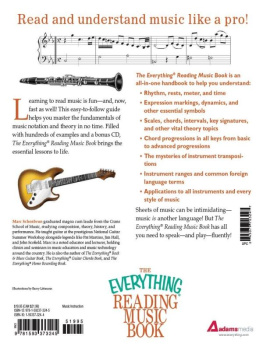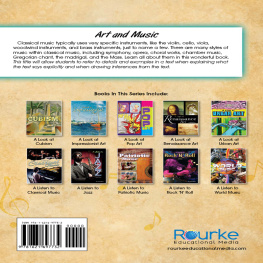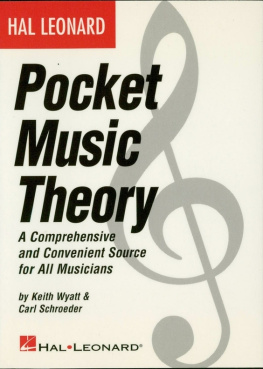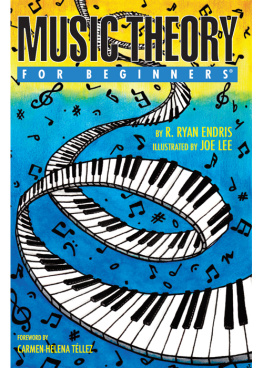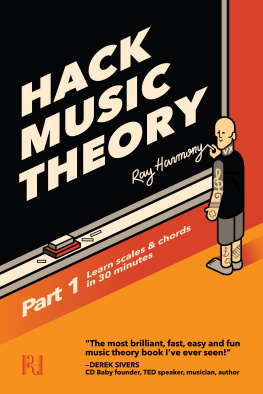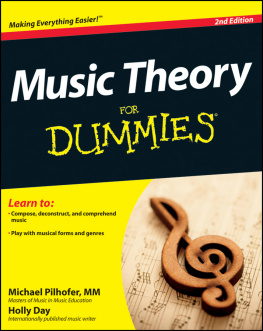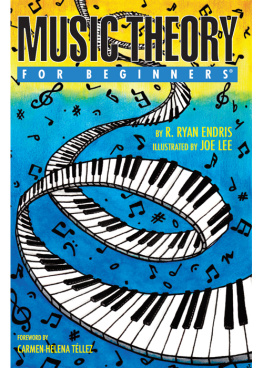Music Theory
FOR
The Music Professional
Music Theory
FOR
The Music Professional
A COMPARISON OF
COMMON-PRACTICE AND
POPULAR GENRES

Richard Sorce
NEW YORK UNIVERSITY

Address orders and editorial
correspondence to:
Ardsley House, Publishers, Inc.
320 Central Park West
New York, NY 10025
Copyright 1995, by Ardsley House, Publishers, Inc.
All rights reserved.
Reproduction or translation of any part of this work beyond that permitted by Sections 107 and 108 of the 1976 United States Copyright Act without the permission of the copyright owner is unlawful. Requests for permission or further information should be addressed to the Permissions Department, Ardsley House.
ISBN: 978-1-880157-20-6
Printed in the United States of America
10 9 8 7 6 5 4 3
TO
BARBARA
an
incessant
and endearing
talent

Contents

Preface
It is assumed that the reader of this text has already had at least a minimum of musical training and that he or she possesses a rudimentary knowledge of the principles of music theory. Nevertheless, presents a brief review of music fundamentals; this review is primarily geared to students returning to theoretical studies after a long absence. Others can refer back to it, as needed. The concepts discussed and illustrated in this chapter are perhaps the most important in the understanding of music theory. As they relate to theoretical practice, these materials are analogous to mastering an alphabet as a prerequisite to learning a foreign language, such as Russian.
The reader will notice that most music-literature examples are in piano or lead-sheet format and draw from many styles of music. The purpose in presenting these various styles is to familiarize the reader/student with many styles as soon as possible.
Most chapters address the application of theoretical concepts as they occur in both traditional and popular styles of music. If one principal theme is observed in this book, it is the idea that Western music has changed minimally throughout the past several hundred years. While progressing through the chapters, the reader should come to realize that classical music is not as mysteriously complex as some think, and that popular-music practice is not significantly different from traditional practice.
A complete general knowledge of the many facets of musical materials will be gained through diligently reading the text, observing the examples, and completing the exercises. The reader should always remember that the component parts and principles of music, as we know it, have been in use for many centuries; over time, the elements and syntax of music have remained essentially the same.
The majority of this book investigates the available tools employed in music composition and the methods by which these tools are applied. Theory examines musical practice; musical practice dictates theory. Theoretical principles and concepts were not written as a guide for composers and songwriters. The rules of music theory were deduced after thousands of pages of music had been analyzed. These rules, then, are nothing more than the practices employed in the majority of cases in the creation of music.
To the Aspiring Musician
This book is meant to prepare the professional musician for any opportunity that may present itself in which a knowledge of the mechanics of music is a prerequisite. Since one can never predict where he or she will ultimately arrive in the music profession, there is no choice but to possess as complete an understanding of music as possible. One must know the constitution of a musical piece, regardless of the style in which it is written and/or performed. Diligent study of this book will result in the following benefits:
. It should improve the music professionals performance and creative endeavors through the understanding of theoretical practice and application.
. It will offer the reader those fundamental principles necessary to understand all of the musical styles, and ideally, it will foster a desire for further information concerning the creation, performance, and presentation of Western music.
. The reader will examine many of the concepts of music theory as they relate to the styles of music from the Baroque period to current practice while expanding and diversifying ones creative understandingthereby increasing the scope of opportunity.
Observing the principles of theory as they relate to all the styles of Western practice enables the reader to understand the development of music more easily. A person engaged in the creation, performance, and promotion of music in any style should be knowledgeable about its syntax. In this profession the opportunities are many, and one never knows where one will find oneself. A musician may be asked to do something outside of his or her specialty when it is least expected; in such a fiercely competitive profession, it is definitely beneficial for the aspiring musician to accept this challenge.
As recently as the early 70s, the multitude of opportunities now available in the music profession did not exist. A formal music education consisted of a traditional course of study that was exclusively based on classical practice. If one chose to pursue an alternative other than performance, composition, or education, one did so by applying that which was learned in a traditional course of study.
This book, however, bridges what may be termed a theory gap. Its content will demonstrate to the reader and music student that, indeed, there is no vast difference between the syntaxes of traditional practice and popular music. Undeniably, most discussions are about and most examples are drawn from what is referred to as common practice. Common practice includes those works written between approximately 1650 and 1875 that provided the principles and practices that have influenced the present course of music and will undoubtedly continue to influence music in the future. Whether a performer, writer, arranger, recording engineer, or publishing agent, the professional musician must know the components of music if he or she expects to sustain a successful career.
There is no quick method of becoming a competent composer, songwriter, arranger, orchestrator, harmonist, improvisor, or theorist. For example, developing a proficiency at harmonizing takes years of practice, experimentation, and study of the great works, not to mention the mastering of the multitude of rules of composition that have been the practice of every composer. The rules employed in composition and harmony have become rules because they were, and still are, the practice of all successful composers.
Breaking the rules is a widely used phraseone which is often uttered by novice musicians with hardly enough experience and training to speak with any authority. Too many artists are ready to break the rules without first learning the principles of their art as best they can. In this high-tech society, many have come to expect results with minimal effort. This is witnessed in theory, composition, and other types of music courses; students want to score, arrange, and compose great music before they learn how to connect two chords properly! This enthusiasm is indeed beneficial, but one must crawl before one can walk. Perhaps with the aid of sophisticated synthesizers and computers one is able to impress others with ones creations; but it is highly doubtful that one could conceive, develop, and present a worthy piece of art without mastering the basic techniques of composition.
Next page

